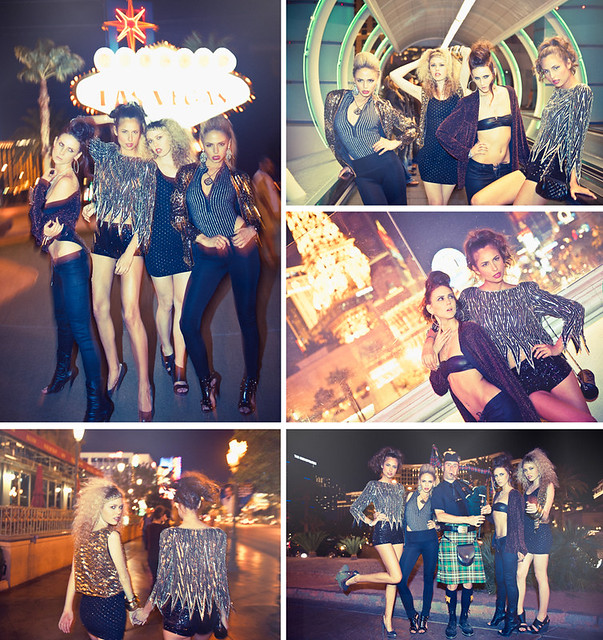
Las Vegas Workshop. Anneliese, Bekka, Brett, and Kaley. D3/24-70mm/SB-800.
I always say, "A technically perfect image is just that... technically perfect"
Emphasis on the "just".
Though it's been a while since the Las Vegas workshop. The change in my approach to "what's in an image" has stuck. Namely that I continue to shoot more interesting images and less technically perfect images. If you look closely, there are all sorts of technical "mistakes" in the frames above. Yet, I purposely and knowingly captured these frames that way. Lots of motion blur from slow shutters, moving subjects, moving backgrounds, overexposure, underexposure, even lens perspective distortion.
But they make for interesting images.
After all, don't you think I could have shot these technically perfect? :)
So in a personal movement away from the mundane and towards the fleeting and magical moments that make an eternal impression, I've made it a point to attempt to capture what can't be "created".
It goes back to my Captivating, Emotional, Connections post. If you pose your models and try to exact a certain vision, you'll get exactly what you want. Or at least you should. But you'll never get magic. You'll never be surprised. You'll never capture "the moment". Neither will you capture motion, but that's understandable if you're posing your models to a T.
I suppose that there's an element of life that I'm trying to capture in my images. Something that lives in the image. Something that allows the viewer to also live through the image. You'd think two-dimensional images would be dead and for lack of a better word, flat. Your goal should be to make a two-dimensional image feel three-dimensional and alive. Your goal should be to allow viewers to connect with your image because that will make them look longer and furthermore remember your image. In a world where images are ubiquitous that's the only separation your image will have from the others.
Now don't get me wrong, my photography was born from fundamental technicalities. My ability to speak technical perfection fluently is what allows me to break from tradition and do things that I otherwise wouldn't be able to do. See things I wouldn't be able to see. It wasn't until my understanding of the mechanics of photography was fluid that I could manipulate settings and light successfully. When I was still thinking about metering and lighting, I sure as hell wasn't thinking about connecting with the model. I dare say that you have to have a fundamental understanding of the mechanics first... you have to know the rules before you can break the rules. Otherwise, you're just doing things willy-nilly with no repeatable success. And sometimes you'll get lucky but you won't even know how you got lucky.
So what's in an image? Hopefully a little bit of life and a little bit of magic.

No comments:
Post a Comment